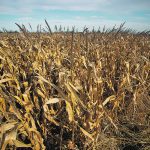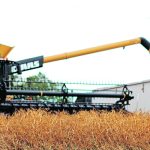Chinese feed pea demand has evaporated, says an analyst. The country imported 2.5 million tonnes of Canadian peas in 2020-21. This year it will likely be about half of that amount, according to Chuck Penner, analyst with LeftField Commodity Research. China was buying boatloads of the product every month in 2020-21 because yellow pea prices […] Read more
 Crop Management
Crop Management

India extends lentil tariff exemption
Canada’s red lentil prices need to fall to be competitive with Australian product, says a Canadian exporter. Australian red lentils are selling for about US$650 per tonne C&F, which is about $50 to $60 per tonne cheaper than Canadian lentils. Rav Kapoor, chief executive officer of ETG Commodities, believes Canadian grower prices need to fall […] Read more

Sask. canola, flax groups to share executive director
Two Saskatchewan farm groups have announced a new management collaboration. The Saskatchewan Canola Development Commission plans to take over administrative functions for the Saskatchewan Flax Development Commission. SaskFlax lost its long-time executive director late last year when Wayne Thompson was hired by the Western Grains Research Foundation to replace outgoing WGRF executive director Garth Patterson. […] Read more

Australia set for record wheat crop as harvest wraps up – traders
SINGAPORE (Reuters) - Australia wheat production is expected to rise to a record 42 million tonnes as results from the final phase of harvest show higher yields in the world’s second-largest exporter of the grain, traders and an analyst said. Higher Australian wheat output comes at a time of stiff competition from the Black Sea region, where […] Read more

Argentine drought, winter wheat seen as risks
Two grain market factors are weighing on Bruce Burnett’s mind as the calendar flips to 2023. The first is Argentina’s drought. “It has certainly impacted the wheat crop dramatically, but now it’s wandering into the corn and soybean growing season,” he said. The country received a much-needed shot of rain at the end of December, […] Read more

Growers warned of wheat price dip
Brennan Turner has a bearish short-term outlook for wheat. “It is more likely that wheat prices are going to come down than rally significantly into the spring and summer,” said the founder of the Combyne Ag crop marketing hub. He noted that fall new crop hard red spring wheat futures at the close of 2022 […] Read more

Enhanced fertilizer can cut emissions
Enhanced efficiency products work, but few farmers are using them because they can’t find a way to make them pay
Broad use of enhanced efficiency nitrogen fertilizer would achieve federal fertilizer emissions reduction targets, but there isn’t enough financial incentive for farmers to do this. The federal government wants to reduce absolute levels of greenhouse gas emissions arising from fertilizer application 30 percent below 2020 levels by 2030, which is an attainable goal, said Richard […] Read more
New elevator employs latest technology
Manitoba is corn poor. The province uses more corn than it grows. One of the hurdles preventing corn expansion is the cost of building adequate capacity for drying and storage. Evan Erlandson’s new grain-handling facility near Altona, Man., will handle three million bushels annually once his two new 190,000-bu. dry bins are standing. His Red […] Read more

TopDry makes double use of heat
The GSI TopDry is simply a dryer located just inside the roof of a grain bin. This layer of grain in the overhead drying chamber is dried by a heater and fan. Hot dry air is channelled up to the roof through a ductwork on the side of the bin. The layer of grain at […] Read more

U.S. Plains wheat ratings dip in Kansas, mixed elsewhere – USDA
CHICAGO (Reuters) – Condition ratings for winter wheat fell during December in Kansas, the top U.S. winter wheat producer, and in several other drought-hit Plains states, although they improved in Colorado and Oklahoma, the U.S. Department of Agriculture (USDA) said on Tuesday. The United States is among the world’s biggest wheat exporters. The USDA issued […] Read more



 Crop Management
Crop Management


